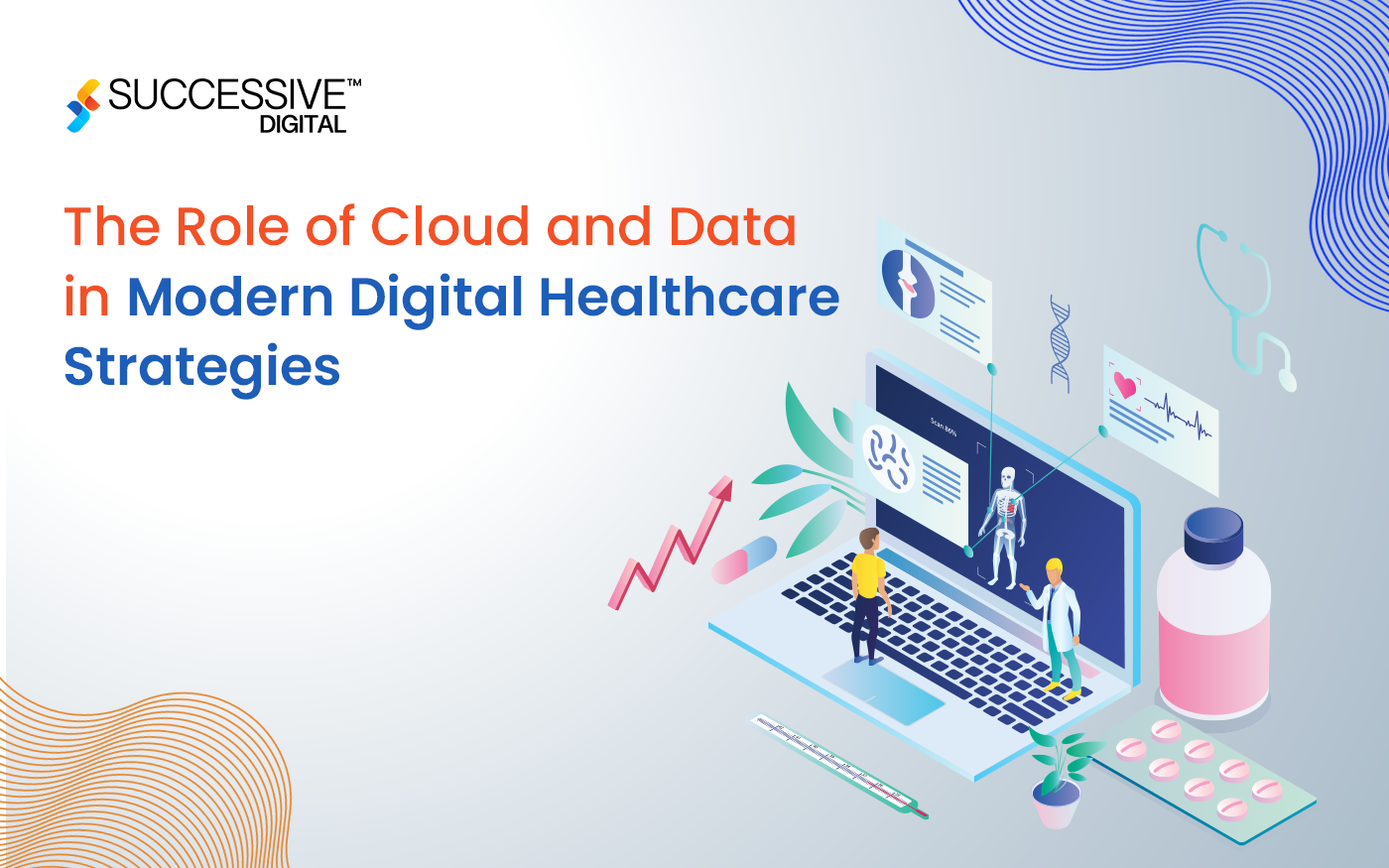A recent KPMG survey reveals that 77% of industry leaders consider generative AI the most influential emerging technology today. With 71% of organizations planning to deploy generative AI solutions within the next two years, the question arises: Is your business fully equipped to handle the complexities of implementing this technology? The potential is undeniable, but so are the challenges of Gen AI for enterprises. From data privacy issues to regulatory compliance, the risks are significant.
Generative AI is a disruptive force, driving substantial investments and large-scale digital transformation across enterprises. However, behind the promise of business transformation lies a host of concerns, including data breaches, lawsuits involving generative AI organizations, and the banning of tools like ChatGPT by various institutions due to privacy violations. This blog goes deeper into these issues. Let’s explore the seven key challenges of integrating generative AI into enterprise businesses and how partnering with a Gen AI consulting company can mitigate these risks.
7 Gen AI Adoption Challenges for Enterprises
1. Integration with Existing Systems
Integrating Gen AI-powered applications or systems into their IT architecture is one of the most significant challenges enterprises face when adopting Gen AI. Legacy infrastructure, often built with outdated technologies, cannot support the high computational demands or modern data workflows required by AI models. This significantly creates operational challenges and leads to delays and inefficiencies. Below, we have jotted down the difficulties in detail:
- Infrastructure Compatibility: Many organizations rely on on-premise data centers, which do not have the computing power, storage, or bandwidth necessary for AI training and inference. Upgrading these systems often requires substantial investment in cloud migration, edge computing, or high-performance servers optimized for AI workloads.
- APIs & Middleware: Legacy systems often lack the flexibility to interact seamlessly with AI models. Middleware is required to bridge disparate systems and enable effective communication between legacy applications and new AI platforms. API integration must be meticulously designed to ensure data flow without errors or security vulnerabilities.
- Data Pipelines: AI models are trained on extensive datasets. Many enterprises must overhaul their data pipelines to ensure they can feed the AI models with large volumes of data in real time. This often involves reconfiguring databases, adopting data lakes, or deploying more advanced ETL (Extract, Transform, Load) systems.
2. Data Privacy & Security
With businesses moving digital and increasing their adoption of Gen AI, they are presented with complex data privacy and security concerns, particularly as these models require vast amounts of training data, often including sensitive or proprietary information. Enterprises risk data breaches, intellectual property theft, or non-compliance with privacy regulations without stringent safeguards. Let’s uncover the detailed challenges of Gen AI around data privacy & security while implementing Gen AI solutions:
- Data Sovereignty: Many countries have strict regulations (e.g., GDPR, HIPAA, HITECH) governing how data is collected, processed, and stored. Enterprises must ensure that Gen AI solutions comply with these global regulations, especially when data crosses borders. Failure to do so can result in heavy fines or legal action that significantly hampers the brand’s image.
- Third-party Vendors: When relying on public AI providers like OpenAI or Stability AI, businesses must ensure these vendors have robust security protocols and contractual obligations to protect their data. Security measures such as end-to-end encryption, secure data storage, and zero-knowledge proofs are essential to mitigate risks.
- Data Anonymization: Sensitive data, particularly in industries like healthcare and finance, must be anonymized or de-identified before being used for AI training. This process ensures that personal information cannot be traced back to individuals, but it also limits the model’s ability to draw insights from more granular data.
Read this blog to explore the potential of Gen AI in healthcare- How is Generative AI Transforming Healthcare: Complete Guide
3. Ethical Bias & Considerations
Generative AI models are only as good as the data they are trained on. If this data contains biased or incomplete information, the AI is likely to replicate and amplify these biases in its outputs. This presents a significant ethical dilemma for enterprises, especially those in healthcare, finance, and law, where biased decisions can have serious societal consequences.
- Bias in Training Data: Datasets used to train Gen AI models often reflect historical and societal biases. For example, a model trained on job application data skewed towards certain demographics may unintentionally replicate biased hiring practices. Data scientists must select and curate diverse datasets to minimize this risk carefully.
- Algorithmic Audits: Regular audits of AI models are essential to detect and correct bias before deployment. This involves using fairness metrics to evaluate the model’s performance across different demographic groups and ensure it doesn’t disproportionately impact any group.
- Ethical AI Governance: Many enterprises are establishing ethical AI boards or committees to oversee AI development and deployment. These governance bodies are responsible for setting ethical guidelines, auditing AI performance, and ensuring that AI usage aligns with the company’s broader social responsibility commitments..
4. Avoiding Technical Debt
Technical debt refers to the costs that accrue when quick fixes are made to technology systems instead of investing in long-term, sustainable solutions. In the context of Gen AI, technical debt can arise from hastily integrating AI models, using suboptimal data pipelines, or failing to document AI algorithms properly.
- Maintenance & Upgrades: As AI models evolve, businesses that haven’t planned for future scalability find it costly or impossible to update their systems. As new data sources and business needs emerge, this can lead to inefficiencies, system downtime, or model inaccuracies.
- Lack of Documentation: When models are deployed without proper documentation of how they were built, how they function, and their dependencies, it can create long-term maintenance issues. Teams may struggle to debug issues or retrain models without clearly understanding the model’s inner workings.
- Short-term Solutions: Organizations may rush AI implementations to gain competitive advantages, but these systems can become unmanageable over time without a solid technical foundation. This can result in rework, increased operational costs, and reduced agility when scaling AI solutions.
5. Model Inaccuracy
While Gen AI models are powerful, they are not infallible. Model inaccuracies can lead to flawed business decisions, inaccurate insights, and potential reputational damage. This is particularly concerning for industries like finance, healthcare, or legal services, where incorrect AI outputs can have severe consequences.
- Training Data Quality: If the training data used to develop the AI model is biased, complete, or updated, the model will likely generate accurate outputs. Organizations must invest in high-quality, diverse, up-to-date data to train their models effectively.
- Regular Model Retraining: AI models degrade over time as real-world conditions change. Continuous monitoring, validation, and retraining of models are essential to maintain accuracy and ensure that outputs remain reliable and relevant.
- Human-in-the-Loop: In many cases, businesses may need to combine AI outputs with human judgment, especially in high-risk areas like compliance, legal decision-making, or medical diagnostics. The “ Human in Loop” approach ensures that AI outputs are reviewed and validated before action.
Explore how to develop custom AI solutions- Developing Custom AI Solutions with GenAI
6. Compliance & Liability
Generative AI is relatively new, and the regulatory environment around it continues to evolve. Enterprises must navigate these legal complexities to ensure compliance with industry-specific regulations and mitigate liability risks. The following challenges of Gen AI are critical for maintaining compliance:
- Regulatory Uncertainty: As AI technology progresses, regulatory frameworks struggle to keep pace. Organizations must stay informed of current rules, especially in highly regulated industries such as healthcare, finance, and data privacy.
In 2023, the European Union introduced the AI Act, which proposes stringent guidelines for AI systems, with non-compliance fines reaching up to €30 million or 6% of global turnover, highlighting the growing need for compliance monitoring.
- Liability for AI Outputs: Establishing liability for harmful or incorrect AI outputs remains a significant challenge. Whether the organization deploying the AI, the vendor, or the user bears responsibility remains legally ambiguous. Gartner predicts that by 2025, 30% of large organizations will face liability exposure related to AI models due to unclear accountability frameworks. To mitigate this, organizations must define accountability clearly in contracts and governance documents, outlining who is liable in case of AI-driven errors.
- Auditable AI Processes: Regulatory bodies require detailed documentation of AI system development and operations. Maintaining auditable processes, such as logging data sets used for training, recording model performance tests, and tracking decisions made by the AI, is critical. These records help organizations demonstrate compliance during audits and mitigate legal risks.
7. Hallucinations
Hallucinations in Generative AI (Gen AI) models occur when the system produces factually incorrect, misleading, or fabricated outputs. This issue becomes critical in high-stakes applications such as legal consultations, financial modeling, and medical diagnostics. The following consequences arise if AI systems begin to hallucinate:
- Root Cause of Hallucinations: Hallucinations often stem from the AI model’s reliance on neural networks that may make incorrect inferences due to noisy, insufficient, or unrepresentative training data. This misinterpretation of data patterns leads to the generation of inaccurate content.
A study by OpenAI highlighted that GPT models can produce incorrect outputs in 15-20% of factual generation tasks, often due to overconfidence in flawed reasoning patterns.
- Detection Mechanisms: Developers should implement anomaly detection algorithms and feedback loops to mitigate hallucinations. Techniques such as embedding self-checking systems within AI pipelines, using human-in-the-loop reviews, and employing multi-model cross-validation are effective.
- Transparency: Transparency is crucial for building trust in AI systems. Organizations must communicate clearly regarding AI model capabilities and limitations, especially regarding accuracy. Methods like output provenance tracking and user-facing disclosures about model uncertainty enable more informed interactions with AI-generated content.
Conclusion
Despite the complexities of implementing generative AI, C-level executives increasingly invest in this transformative technology, recognizing its potential for competitive advantage. However, beyond merely managing and monitoring AI deployments, enterprises must adopt best practices and address critical factors to establish an AI-centric culture and facilitate continuous learning. Leaders should engage actively with their teams, ensuring open communication channels to identify what strategies are effective and which need adjustment. Establishing clear priorities for skill development, setting growth goals, and providing targeted learning pathways are crucial for long-term success. Generative AI is not a passing trend—it’s a strategic imperative. Partnering with a company offering Gen AI consulting services is essential to successfully navigate these challenges and leverage its full potential.












